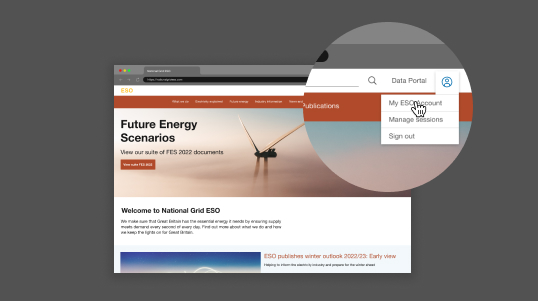
The final Phase 1 report in our Offshore Coordination project
16 Dec 2020 - 3 minute read
Assessing the most beneficial approaches to offshore networks in order to deliver better outcomes for consumers and coastal communities
Last year saw a major milestone in the UK’s energy revolution as the government passed a law requiring the UK to ensure net zero greenhouse gas emissions by 2050. Offshore wind has a significant role to play in this, as emphasised by the government’s recently published Ten Point Plan for a Green Industrial Revolution, with point one reinforcing the target for 40 gigawatts (GW) of offshore wind by 2030.
One of the challenges to delivering the ambition in the timescales required will be ensuring that the offshore and onshore transmission network enables this growth in a way that is efficient for consumers and takes account of the impacts on coastal communities and the environment.
The ESO Offshore Coordination project forms part of the Department of Business, Energy and Industrial Strategy (BEIS) Offshore Transmission Network Review (OTNR). The ESO project has been examining a more coordinated approach to offshore network development, including the connections required and technology availability, and assessing the costs and benefits of such an approach to inform the OTNR. We launched our consultation on 30 September 2020 to seek stakeholders’ feedback on our approach to this analysis and subsequent findings.
Read the full final Phase 1 report
In response to feedback, we conducted a new sensitivity analysis on the impact of commencing integration in 2030, compared to integration commencing in 2025, as in our original analysis. This confirms that there is significant benefit in moving quickly to an integrated network and the importance of considering what flexibility there is for coordination between 2025 and 2030.The key messages in our Final Phase 1 report are:
-
Adopting an integrated approach for all offshore projects to be delivered from 2025 has the potential to save consumers approximately £6 billion, or 18 per cent, in capital and operating expenditure between now and 2050.
-
There are also significant environmental and social benefits with an integrated approach, as the number of new electricity infrastructure assets, including cables and onshore landing points, could be reduced by around 50 per cent.
-
Delivering the extent of integration required in this timescale would be extremely challenging and potentially risk meeting the target of 40 GW of wind by 2030. However, the benefits reduce the later integration begins.
-
An integrated approach for projects to be delivered from 2030, compared to the status quo, would deliver savings to consumers of around £3 billion (or 8 per cent) and could facilitate a 30 per cent reduction in the new electricity assets required associated with these offshore connections.
-
There is therefore a need to deploy innovative and flexible approaches to the connection of offshore wind in the intervening period until a new enduring, integrated, approach is in place such that, as much as possible, the benefits of an integrated approach can be captured for consumers and communities without placing the delivery of projects underway and the offshore wind target at undue risk.
-
The increased levels of offshore wind mean there will be an increase in onshore infrastructure in all options, including, and potentially beyond, that set out in the Network Options Assessment (NOA), However, adopting an integrated approach across onshore and offshore can minimise the overall increase.
-
The majority of the technology required for the integrated design is available now or will be by 2030. However, a key component to release the full benefits of an integrated solution are high voltage direct current (HVDC) circuit breakers. A targeted innovation strategy in the UK, along with support for early commercial use, could help progress HVDC circuit breakers to commercial use and establish Great Britain as a world leader in offshore grids.
-
There is a need for all parties to work collaboratively and at pace to enable Great Britain to achieve its offshore wind targets and net zero ambition at least cost to consumers and with least impact on communities and the environment.
